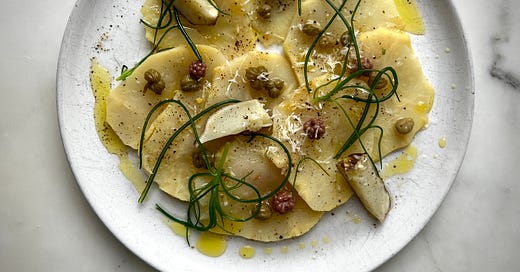One year down the line, a thank you
An anniversary of sorts and a recipe for a celeriac baked in salt pastry
An anniversary
What began one year ago here for me has turned into something, that now I look back I would never have truly imagined. So very many of you have joined me here in the last twelve months, now slowly approaching two thousand of you, and today I find that just short of one hundred of you pay to read my words. It’s not about numbers, but they d…
Keep reading with a 7-day free trial
Subscribe to A Private Chef to keep reading this post and get 7 days of free access to the full post archives.



